Rhaphidophora Tetrasperma is an easy care, gorgeous tropical plant with lush foliage and pinnate leaves. This interesting vining plant makes a lovely indoor plant with its distinctive leaf fenestrations.
The mini monstera, or Ginny Monstera, is in the plant family araceae. However, This aroid is not actually a relative of monsteras.
Rhaphidophora Tetrasperma is also unrelated to philodendrons. But it is often called the Ginny philodendron. ginny philodendron care is easy once you learn a few tips. We are here to help.
This plant has such pretty leaf texture. It’s smooth, glowy and delicate. Even in low light the leaves reflect the light with an inner glow. It looks great on a shelf with a light near it. Or set back from a window.
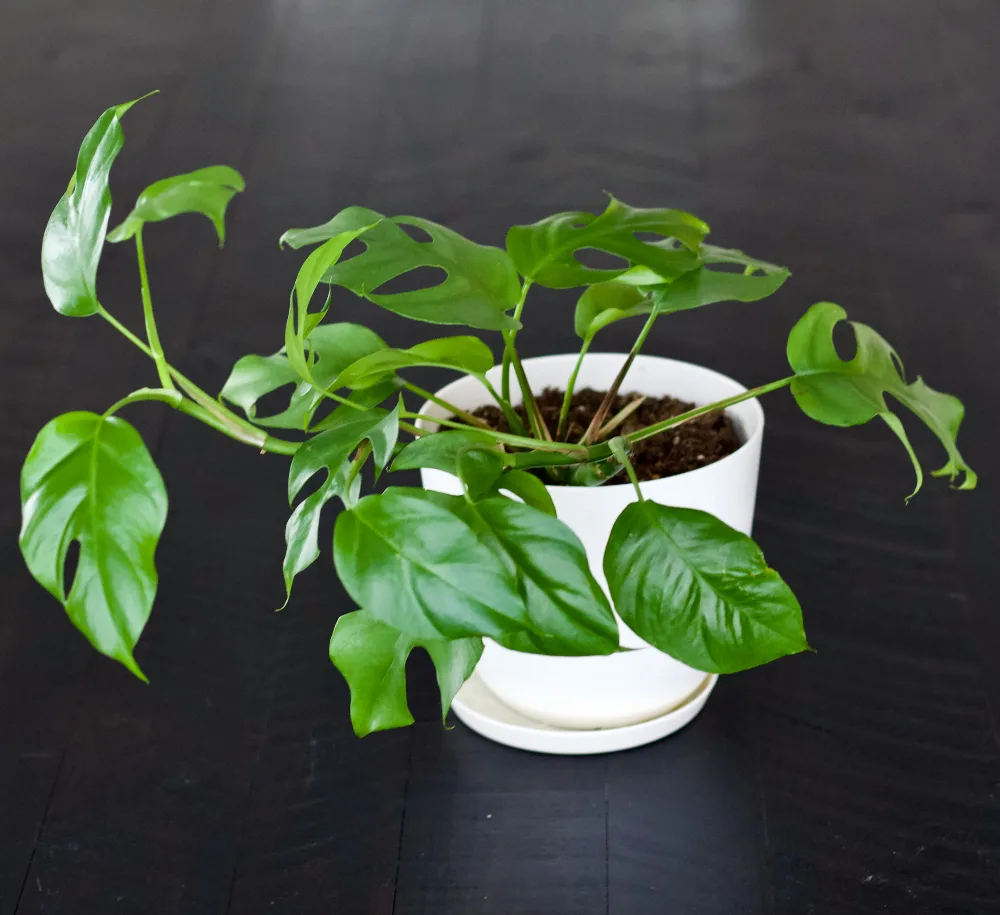
Rhaphidophora Tetrasperma Profile:
The Rhaphidophora Tetrasperma is native to Malaysia and Southern Thailand.
Like pothos plants, The ginny is an aroid vine. It grows from aerial roots. It loves humidity, warmth and bright INDIRECT light.
The mini monstera grows to 12 feet long in the wild. It twines its way up trees. It travels by crawling along the forest floor until it finds something it wants to climb.
As a houseplant, it will not get much beyond 4 feet in length. Long enough to show it off. And requires some thought in placement.
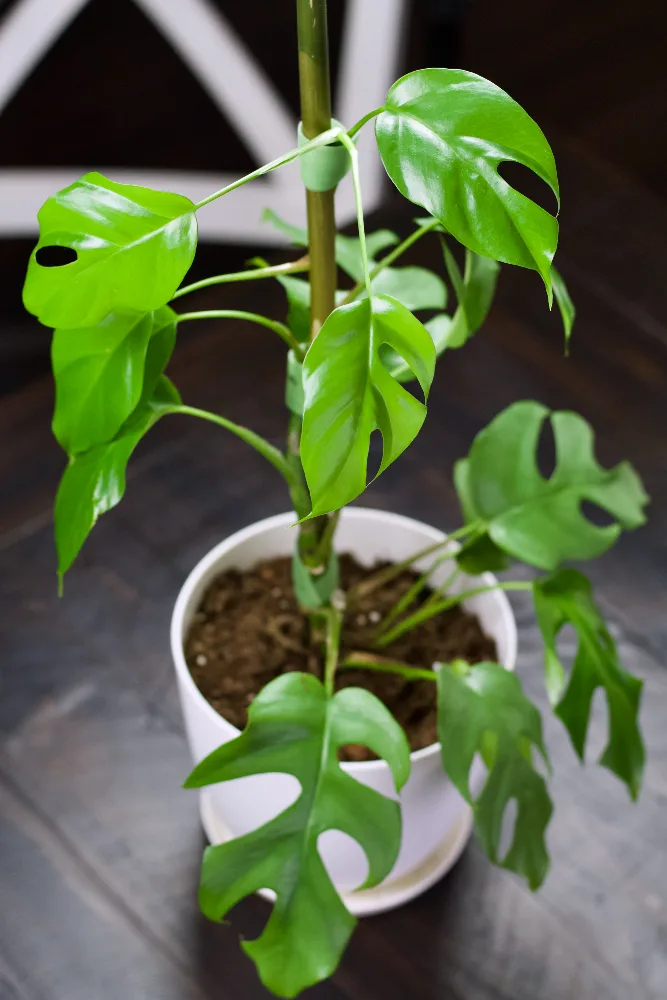
How do you want to display this gorgeous vine?
How to Train the Ginny Monstera
Like most vining plants. Ginny is fairly agreeable in how you display it. Just allow it to grow any ole ways it wants. You can also keep it trimmed back to display it on a table. Here are some Ideas for training a Ginny plant.
Training a Ginny Monstera Vertically:
The mini monstera is beautiful on a moss pole or trellis. You will need to attach it to your pole or trellis since it cannot attach by itself. The easiest way to attach a vine to a trellis is with plant velcro. We show you how to plant it on a Moss Pole in this post.
The Mini Monstera will also grow well as a hanging basket. You can plant the mini in a basket alone and fill it in as you take cuttings and plant them in with the mother plant. Or group it with other plants with like care needs and make a lovely group planted basket that will catch the eye and add an interesting focal point in your room.
R. Tetrasperma Horizontal Display
If you want Raphidophora to grow horizontally, Drape it along a shelf or allow it to trail along the top of a sideboard.
Bookshelves, window seat ledges and deep window sills are fun places for Ginny to grow.

This is a lovely, easy care, fast growing plant. This vine is usually in your local garden shops, but you can always find it on Etsy. I encourage you to find one and bring it home.
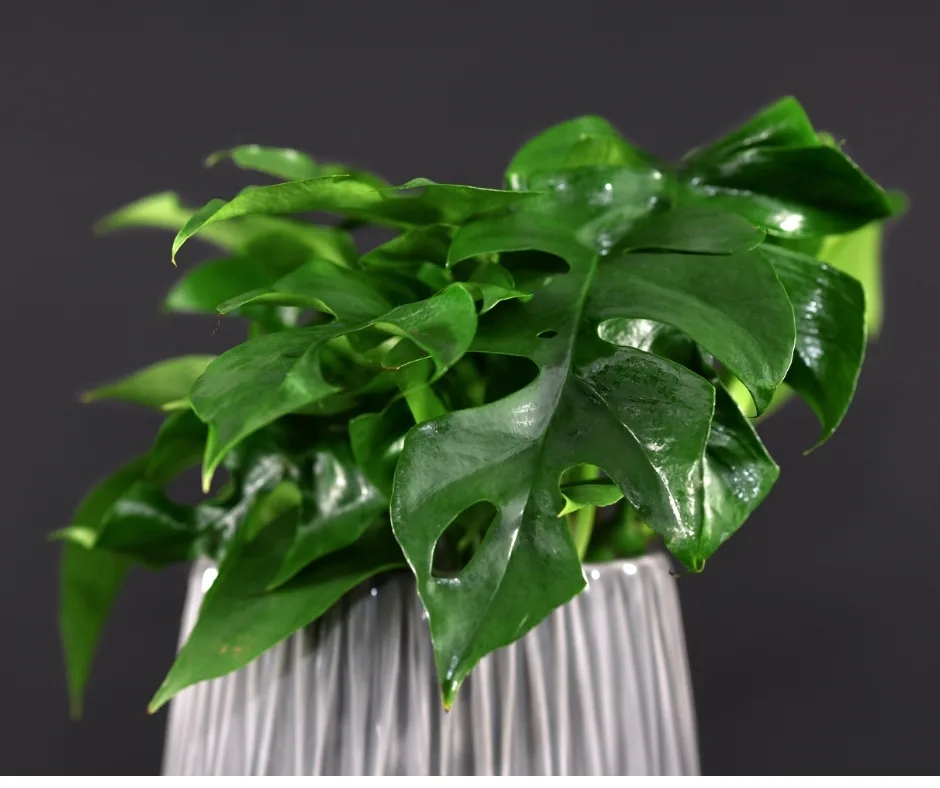
The leaf fenestrations and lush vine growth resemble the Monstera Deliciosa. And the Monstera Adansonii. However the mini monstera has smaller leaves than the deliciosa and is not as delicately laced with splits in its leaves as the Adansonii.
How Do You Care For Raphidophora Tetrasperma?
The Raphidophora Tetrasperma vine is delicate looking, but actually it’s rather easy care and surprisingly tough. Here is a quick guide to it’s care.
| Familiar Names: | Mini Monstera, Ginny, Ginny Monstera, Ginny Philodendron, |
| Scientific Name | Raphidophora Tetrasperma |
| Plant Family | Araceae |
| Care Difficulty | Easy |
| Temperature | 65 to 85 Degrees F. |
| Watering | Soak with Water when dry to the root zone (about 2 inches down). |
| Soil | Raphidophora tetrasperma soil mix is light and friable. A good potting soil with perlite and orchid bark provides adequate drainage. |
| Lighting | Ginny Monstera prefers moderate indirect light for best leaf fenestration, but will tolerate low light. |
| Growth | This tropical plant grows as a trailing vine. It can be trained onto a moss pole or trellis, draped around or put in a hanging planter and allowed to fall. |
Below see our in depth printable care guide. Read our care guide for all the tips to keep this plant happy.
Raphidophora Tetrasperma Care Guide
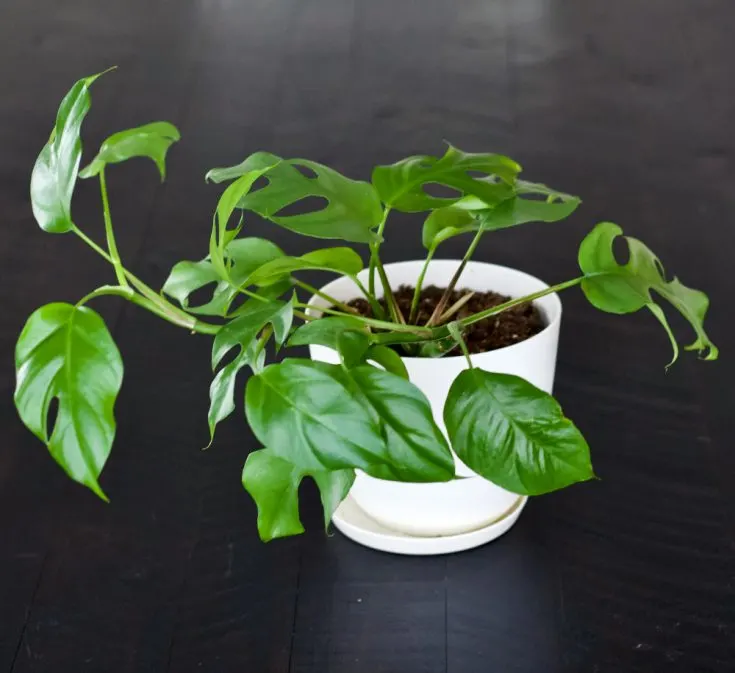
The Raphidophora Tetrasperma is also known as the mini monstera or Ginny Monstera or even the ginny Philodendron. but it is none of these.
This lovely tropical vine with interesting leaf fenestrations looks like other fenestrated vines. but it a distinct plant all its own.
While this aroid is not a relative of monsteras. It is in the family araceae along with monsteras and other tropical vining plants.
This Care Guide will teach you how to keep this pretty houseplant happy all through the year.
Tools
- Pot (ceramic, plastic, or terra cotta)
- Potting medium (perlite, soil, and orchid bark)
- Scissors
- Rubbing Alcohol
Instructions
Rhapidophora Tetrasperma Soil Mix:
- Raphidophora Tetrasperma prefer well draining indoor potting soil mixes with organic matter.
- Soil with perlite and some orchid bark A homemade aroid soil mix of 2 parts potting soil, 2 parts perlite and 1 part orchid bark will encourage root growth.
- Make sure your pot has drainage at the bottom. Do not use a pot with no drainage hole for this plant.
- A heavy soil potting mix is not recommended for Raphidophora Tetrasperma.
Rhapidophora Tetrasperma Pot Size and Type:
- The pot size should fit the root ball of your mini monstera. Too large a pot will hold more moisture than the plant can use and this causes root rot.
- The mini monstera can grow in many different types of pots but the pots must have a drainage hole.
- I like to plant mine in ceramic pots with a drainage hole. Terra Cotta pots are also great for this plant since they wick water away from the roots.
- Repot every second year or when roots come out the drainage holes on the pot bottom. Don't jump to a huge pot from a small one. Just go to the next size up pot.
Lighting:
- The Ginny monstera will be happiest in moderate indirect light. Some filtered sunlight from a window is fine. However harsh direct sunlight will burn Rhaphidophora Tetrasperma plant leaves.
- R. Tetrasperma will also grow just fine in lower light conditions, but the growth will be slower. In low light conditions the ginny will produce a smaller leaf size and lose fenestrations (the split lobes on the plant leaves).
- No plant can grow with a complete lack of light. If your preferred placement for this plant is very low light or a windowless room, you will need to add a grow light to keep it healthy. A Led light is easy to hide and use as a spot light. This will provide the ambient light levels the ginny needs.
- Make sure the Raphidophora Tetrasperma isn't sitting in constant direct sunlight. The leaves can burn. Moderate light from a window will provide plenty of natural light for Ginny.
Watering:
- The sensitive roots will rot quickly if they sit in heavy continually damp soil. Overwatering is the most common plant error we make. Fungal root rot is sure to follow overwatering. Read our Watering Guide Here.
- Water your Monstera Minima when the soil is dry at least an inch down into the root zone. These aroid plants are typically drought resistant and can withstand longer periods of dryness compared to other houseplants.
- Watering is best done on a regular schedule so the plant is not over or under watered. Both can cause stress on the plant.
- In dormant winter months reduce watering to when the soil is dry.
- Never let this plant get wet feet or it will start to show symptoms of root rot. This plant is susceptible to root rot in damp heavy soils. Read our post on how to fix root rot if you see drooping yellowing leaves in your R. tetrasperma.
Heavy wet soils also attract fungus gnats. Learn how to discourage and kill fungus gnats in this post.
Humidity:
- Like most tropical plants, mini monstera enjoy humidity levels of 45% to 70%.
- If your home is dry add a pebble tray with water under the plant pot. It will evaporate up into the leaves and hydrate the leaves.
- Grouping plants close together will also improve ambient humidity to the plants.
How to Fertilize:
- Apply a good quality fertilizer (linked in materials) monthly through Spring and summer when your raphidophora is in its active growing phase.
- Regular fertilizing on a monthly schedule is fine.
- Decrease feedings by late Fall and allow this plant to rest through the winter months.
- Too much fertilizer feeding will cause fertilizer burn. This can cause an over accumulation of salts in the soil.
- The delicate roots of R.Tetrasperma will burn if too much salt is in the soil. You will also see brown spots on the leaves.
- The solution is to quit fertilizer applications and flush the plant thoroughly with water until the pot has water coming out of it for 5 to 10 minutes. Allow the pot to drain completely.
- Be more sparing with fertilizer and it should grow as a healthy plant with no brown spots in future.
Temperature:
- The mini monstera plant ideal temperatures are between 65-85 degrees F. It can tolerate down to 60 degrees F. occasionally.
- Hot temperatures will make Ginny wilt. Set her out of the heat and mist the leaves to help revive the plant.
How to Train the Ginny Monstera
Like most vining plants. Ginny is fairly agreeable in how you display it. Just allow it to grow any ole ways it wants. You can also keep it trimmed back to display it on a table. Here are some Ideas for training a Ginny plant.
Training a Ginny Monstera Vertically:
The mini monstera is beautiful on a moss pole or trellis. You will need to attach it to your pole or trellis since it cannot attach by itself. The easiest way to attach a vine to a trellis is with plant velcro. We show you how to plant it on a Moss Pole in this post.
The Mini Monstera will also grow well as a hanging basket.
You can plant the mini in a basket alone and fill it in as you take cuttings and plant them in with the mother plant. Or group it with other plants with like care needs and make a lovely group planted basket that will catch the eye and add an interesting focal point in your room.
R. Tetrasperma Horizontal Display
If you want Raphidophora to grow horizontally, Drape it along a shelf or allow it to trail along the top of a sideboard. Bookshelves, window seat ledges and deep window sills are fun places for Ginny to grow.
Pests:
- The Raphidophora Tetrasperma is a hardy resilient plant. However, all plants can get attacked by pests. Read our post on the seven most common pests likely to bother the tetrasperma here.
- Stress by longterm overwatering, poor light, extreme temperatures and soil conditions are contributors to plant stress..
- Spider mites, mealy bugs, scale, thrips and whitefly are the most common houseplant pest you will see.
- Read our post on How to get rid of aphids and other pests with our homemade pesticide soap recipe or neems oil.
- To minimize the possibility of pests be sure to check all nursery plants before bringing them home.
- Quarantine all new plants until you are sure no pests live in them.
How to Propagate:
- Cut a leaf stem in between the nodes using sterile scissors.
- Place cutting in a jar of water, cut side down. Don't submerge the leaves.
- Be sure to refresh the water in your cutting jar every couple of days to help oxygenate the stem and reduce any bad bacteria in the water.
- After several weeks roots will grow
- Plant in soil when roots are 2-3 inches long
- Or plant the cutting directly in moist soil. For a soil cutting, keep the soil moist until you see new growth on the plant
Notes
Training and staking:
Watch our video for a demonstration of how to repot and stake this wonderful vine.
Is Tetrasperma Toxic? Plant Warning:
Rhaphidophora Tetrasperma contains calcium oxalate crystals. These are toxic. Keep this plant away from pets and people.
More Easy Care Houseplants:
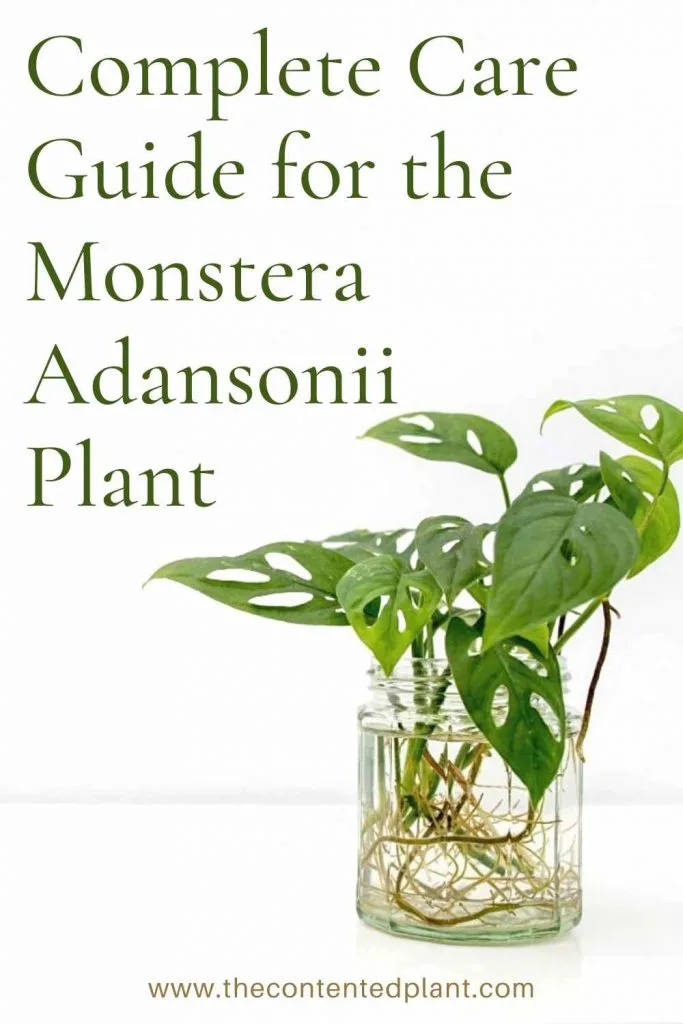
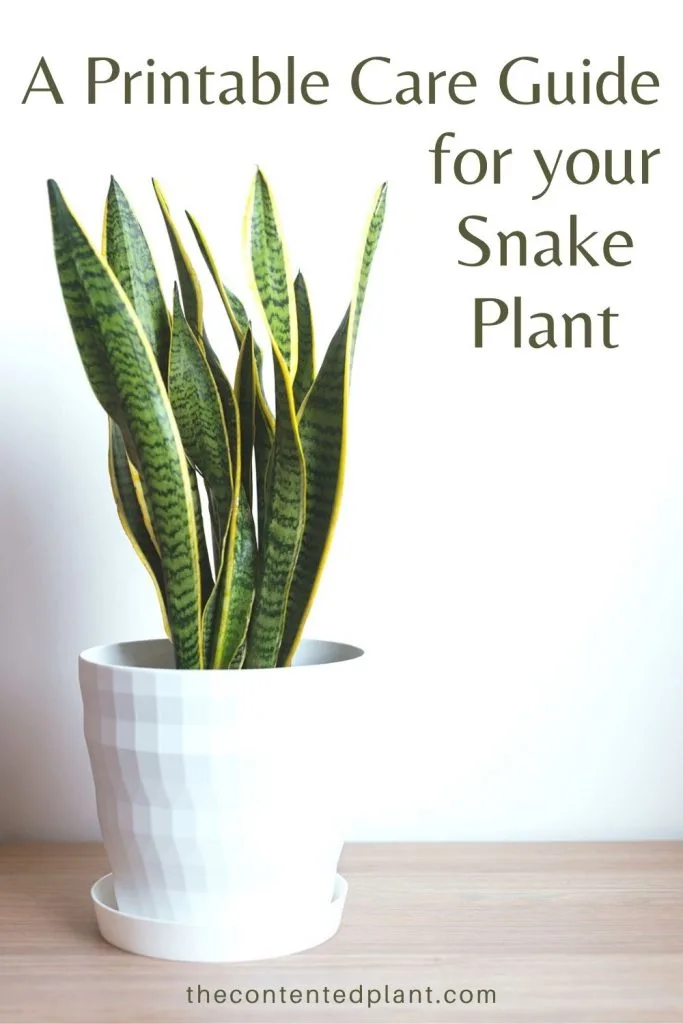
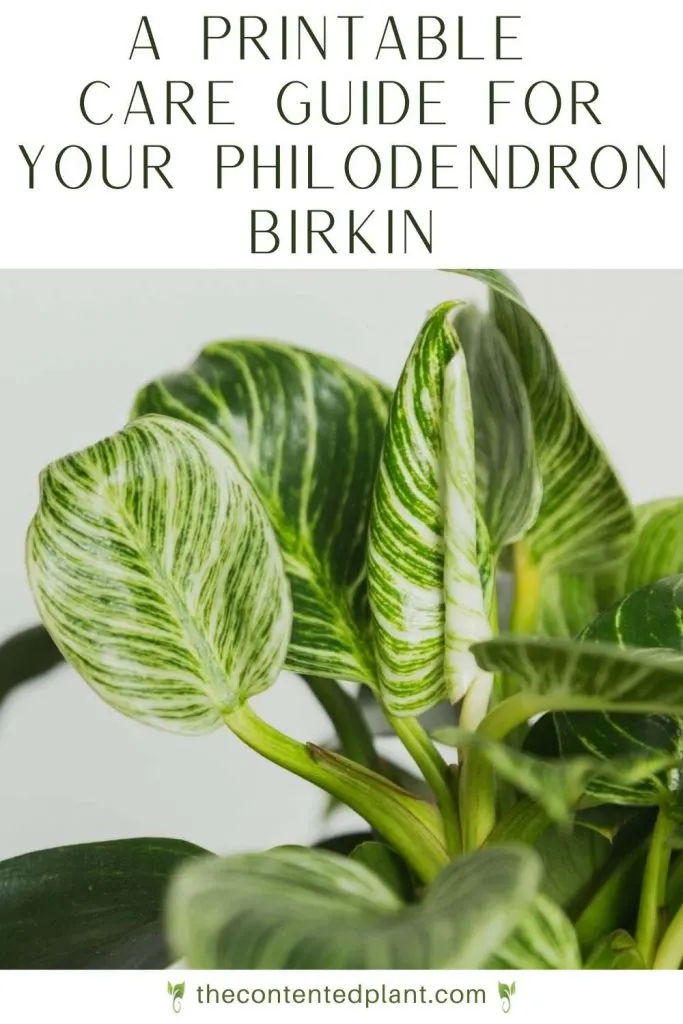
Related Content:
Follow Us:
Find us on YouTube, Instagram , Pinterest and TikTok! We love to Plant chat. We also comment, like and occasionally share your content to our daily stories. We’d love to see your plants. Share your joy in your houseplants. Happy Planting!
Have questions on this plant? Please comment or email us.
Recent Posts:
- 5 Fantastic Cactus Species for Your Home
- Pygmy Date Palm Trees
- Bromeliad Care Guide and Profile
- Growing Gloxinia Plants in Your Home
- Staghorn Ferns Care and Maintenance
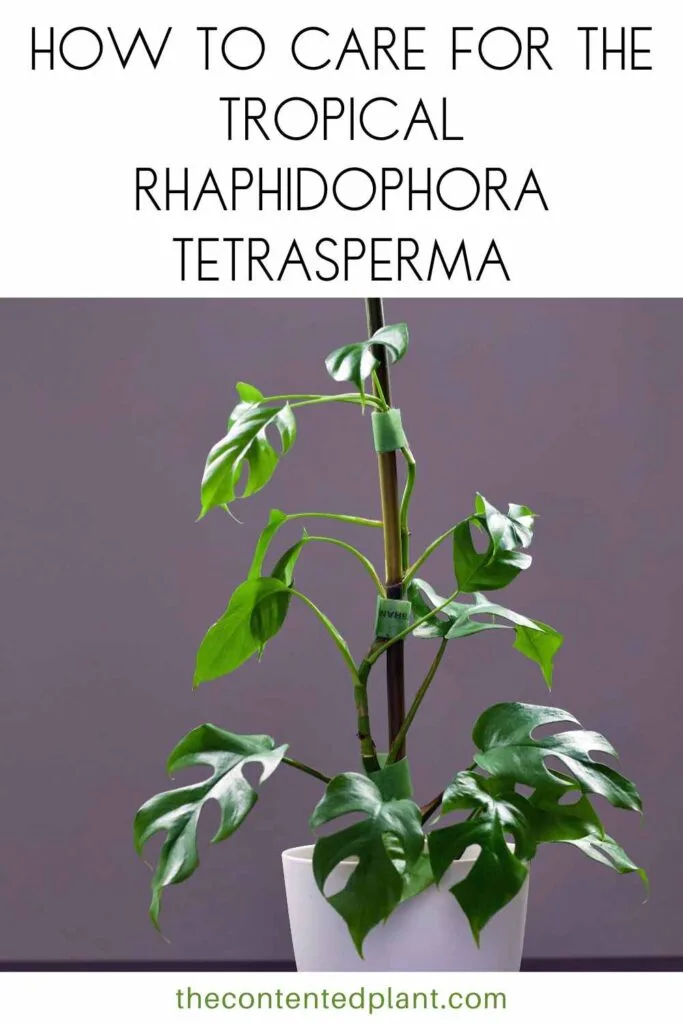

Philodendron Burle Marx Plant Care Guide - The Contented Plant
Tuesday 31st of May 2022
[…] Rhaphidophora Tetrasperma […]
How to Care for a Peace Lily - The Contented Plant
Wednesday 30th of March 2022
[…] of these Aroids are easy care plants. Pothos, mini monstera and the Philodendron Brasil are great choices for houseplants you will enjoy growing. Here are even […]
Moss Poles For Plants - The Contented Plant
Thursday 9th of September 2021
[…] trained her Rhaphidophora Tetrasperma onto a bamboo stake as a […]
Monstera Adansonii Plant Care Guide - The Contented Plant
Sunday 8th of August 2021
[…] Rhaphidophora Tetrasperma […]
Philodendron Birkin Care Guide and Profile - The Contented Plant
Friday 19th of March 2021
[…] Rhaphidophora Tetrasperma (mini Monstera) […]